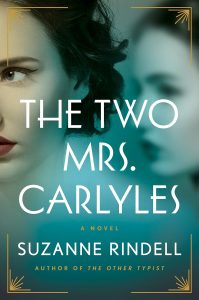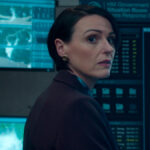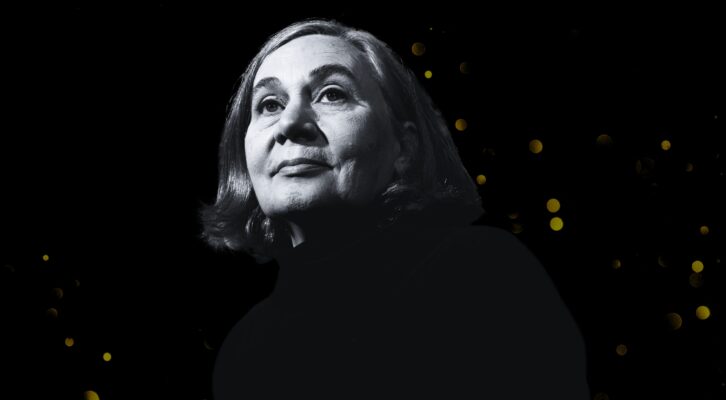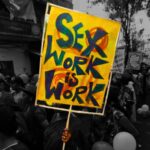In my latest novel, The Two Mrs. Carlyles, the 1906 San Francisco earthquake serves as a catalyst for the plot, literally shaking the story into motion. The main characters—a group of three young women living in a boardinghouse of ill-repute—share a dark secret that is conveniently buried in the rubble of this major disaster, and this fact drives the mystery that follows.
I realize I must have a “thing” for using major events to spark the telling of fictional mystery. In my previous novel, Eagle & Crane, Pearl Harbor and the internment of Japanese Americans create the conditions that provoke the book’s mystery (a father and son’s escape from the camps and their consequent deaths in a biplane crash that may or may not be all that it seems upon initial investigation).
History is writ large, but as a novelist, I find myself compelled to trace out such momentous events through the more personal lives of my fictional characters.
And I’m not alone! The plots of the following ten books below are propelled along—either into initial motion, or else towards an altered outcome—by real events. Given what we ourselves are living through now (global pandemic and major political protests, complete with a side of murder hornets), I can’t think of a more relatable moment to ponder the ways in which large-scale events can shape, frame, and even redirect our personal stories.

Their Eyes Were Watching God by Zora Neale Hurston
Catalyst: Natural Disaster
This novel unfolds to tell the story of a young Black woman in the Everglades navigating her way towards independence, maturity, and love, but the plot pivots when the 1928 Okeechobee hurricane hits. As Janie and her lover struggle for survival, someone is shot and killed. I have a vivid memory of first reading this one while living in Houston, right as Hurricane Ike rolled into town. Hurston’s descriptions of the little signs that precede a hurricane (perfect sunny weather, strange behaviors of animals who somehow know to look for higher ground on instinct, etc) were so uncanny as I observed the same in real time!

Grapes of Wrath by John Steinbeck
Catalyst: Natural Disaster Plus Economic Crisis
The Dust Bowl storms of the 1930s and the Great Depression make for a one-two punch of an event that drives this story. The book’s main mystery or suspense comes in the form of whether the Joads will survive, and how. The poverty that dogs the Joads across the country and through the Hoovervilles is very real and unrelenting.
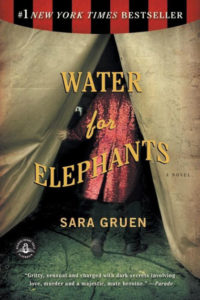
Water for Elephants by Sara Gruen
Catalyst: Economic Crisis
I formerly worked at the literary agency that represented Sara Gruen, and it was thrilling to see her book do so well! In many ways, this book is also driven by the Great Depression… it is the reason so many of the characters have opted to work in a circus, the reason the female lead is afraid to leave the villainous ring leader, and in some way (trying not to give any spoilers here) the Depression forces an unlikely group of characters together in a pressure-cooker that sets in motion the “murder mystery” embedded in this book.

Death in Venice by Thomas Mann
Catalyst: Infectious Disease
I’ve been meaning to reread this one through the lens of living in the time of COVID-19 and social distancing. The first time I read this book, I remember being sooooo nervous as the protagonist observed the health advisories warning him to get out of Venice (cholera) yet kept on deciding to stay at every turn, obsessed with the young beautiful boy also staying in his hotel, Tadzio. I can only imagine the feeling of impending danger and doom would be heightened just now.

Fever by Mary Beth Keane
Catalyst: Infectious Disease
Typhoid…another infectious disease that wreaked havoc with each outbreak. And I suppose history has solved the “mystery” that is Mary Mallon—”Typhoid Mary,” the asymptomatic carrier who infected 53 people in the New York area. The book is driven in part by this famous historical outbreak (or series of outbreaks, really), and how difficult it can be to comprehend the reality of being an “asymptomatic carrier.” Mary Beth Keane seeks to restore humanity to a much-maligned historical figure.
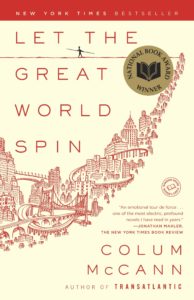
Let the Great World Spin by Colum McCann
Catalyst: Manmade Marvel, Marvelous Feat
In 1974, Philippe Petit performed a tightrope walk between the two skyscrapers of the World Trade Center in New York. This “event” isn’t a major natural disaster or pandemic, but it is the central motif of McCann’s novel, and he uses it to beautiful effect (ahem, National Book Award, anyone?). McCann uses this moment in history as an anchor as he weaves together his fictional stories that evoke this “tightrope walking” tension in other ways.

Extremely Loud and Incredibly Close by Jonathan Safran Foer
Catalyst: September 11
In thinking about the Twin Towers, Extremely Loud and Incredibly Close also comes to mind, where the events of 9/11 cause the tragic loss that sets the plot in motion. The young hero’s quest to solve the mystery of a key he believes belonged to his late father is also the quest to process his grief and bewilderment – grief and bewilderment that in many ways was felt on a national and even international level in the aftermath of 9/11.
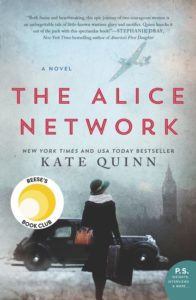
The Alice Network by Kate Quinn
Catalyst: World War II
Impossible to make this list and ignore the two World Wars that in many ways defined the first half of the 20th century! This novel moves back and forth between 1915 and 1947, working to unravel the mystery of a betrayal within the “Alice Network,” based on a real life network of female spies during WWI. The plot of Quinn’s book takes inspiration from real events, while the character development of her two main heroines are spurred along by the changing roles of women – an evolution that was unquestionably accelerated by both World Wars.

Snow Falling on Cedars by David Guterson
Catalyst: World War II
Kibuo Miyamoto is accused and put on trial for the murder of Puget Sound fisherman Carl Heine. This novel works to steadily reveal the backstories leading up to the trial, i.e. Pearl Harbor, Japanese-American internment, and the continued discrimination/anti-Japanese sentiment that shapes the community’s eagerness to accuse Kibuo. The backdrop of what it was like to be Japanese-American and live in the U.S.—particularly on the West Coast—is the driving tension of this mystery.
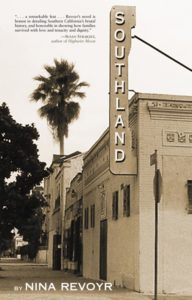
Southland by Nina Revoyr
Catalyst: Rebellion/Uprising
This is actually on my TBR list. It caught my attention because it’s one of the few fiction titles I’ve ever come across about the Watts Riots of 1965. Sadly, the Watts Riots (also known as the Watts Rebellion) were in protest of police mistreatment and discrimination… as were the Rodney King riots of 1992… and the present-day BLM protests against the brutal killing of George Floyd… so it makes you wonder how far we have (or haven’t) come. The protagonist, a young Japanese-American woman, attempts to piece together the mystery of what happened to four young Black teens who died in her grandfather’s L.A. store during the Watts Rebellion, their deaths never reported. The book moves between the 1940s, the 1960s, and the 1990s, and I am interested in how it potentially explores the idea that some of the “momentous events” that shape our narratives go on doing so over the course of more than just one generation.
***


